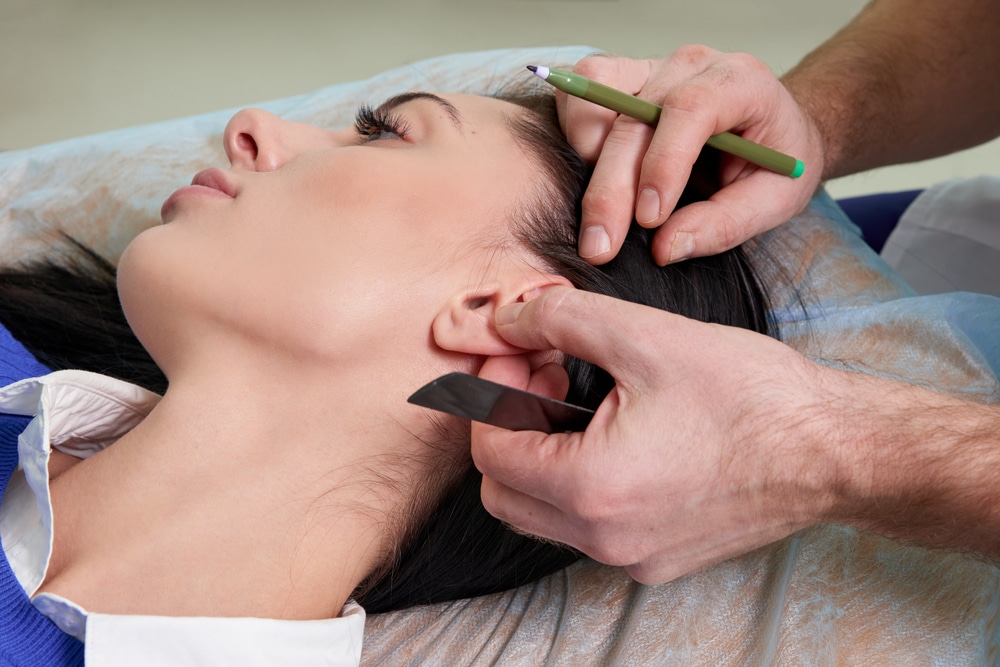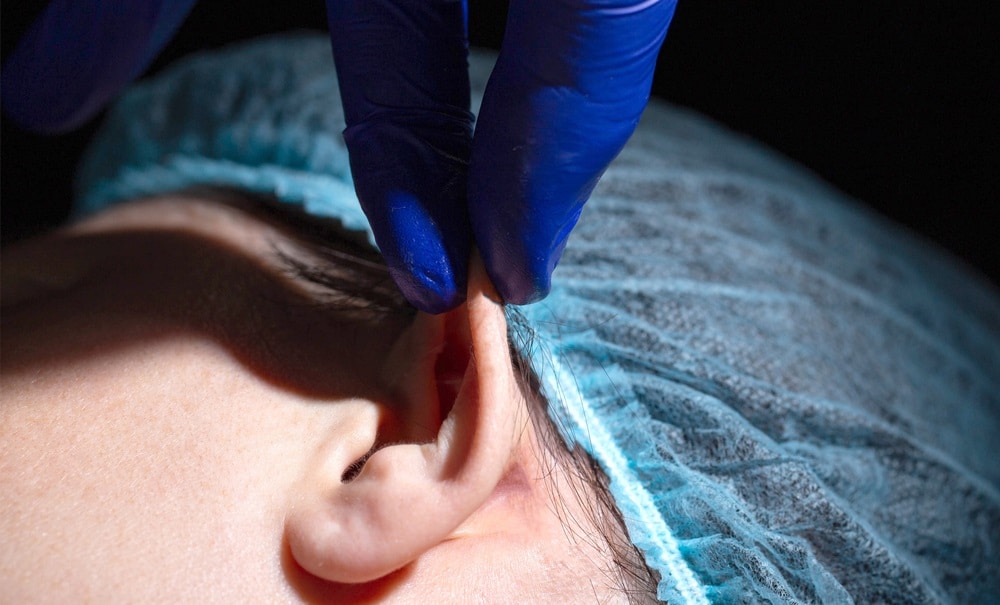
Otoplasty surgery, commonly called ear surgery, can reshape, reposition, or resize the ears. Performed by experienced surgeons like Dr. Benjamin G. Swartout, otoplasty is often sought by individuals with prominent or asymmetrical ears. The goal is to enhance facial balance, improve ear appearance, and boost self-esteem.
Keep reading to learn about the permanence of otoplasty, different factors influencing the longevity of results, and the expected duration of otoplasty results.
Permanence in Otoplasty
Otoplasty is a highly sought-after cosmetic surgery solution renowned for its capacity to yield permanent improvements in the anatomical shape, symmetry, and overall aesthetic of prominent ears. This surgical procedure, one of the many effective ear surgery solutions available, employs minimally invasive otoplasty techniques to artfully reshape the ear.
The initial surgery is meticulously designed by an experienced surgeon, like Dr. Benjamin G. Swartout, to exclusively alter the visual aspect of the ears. This is achieved by enhancing the natural folds and bringing outlier ears to their correct position, closer to the head. The extent of surgery required is determined during the initial consultation, where the surgeon assesses the patient’s ear cartilage, identifying issues such as excess cartilage, cartilage sagging, or a missing fold (under-developed antihelix).
The results of otoplasty surgery are immediate and typically last an entire lifetime, assuming the sutures, whether they are permanent sutures, dissolvable sutures, or modern-day nylon sutures, remain intact. Choosing a skilled surgeon, like Dr. Swartout, is vital for successful ear surgery and each patient’s satisfaction with the outcome. The permanence of otoplasty results sets it apart from many other facial plastic surgery procedures. This makes it a popular choice among prospective patients seeking long-lasting changes to their facial features.
Factors Influencing Long-Term Results
Determinants that Affect the Durability of Otoplasty
Several factors can influence the durability of otoplasty results.
One crucial factor is the surgical technique used. For instance, some surgeons use a shaving technique, but Dr. Swartout prefers to bend the cartilage with permanent sutures buried under the skin, which helps create a more natural contour safely.
In addition, the patient’s age and overall health also play a significant role. The ideal candidates for otoplasty are usually between the ages of 5 and 66, maintain health and wellness, and do not smoke.
Individual Factors and Surgical Techniques for Longevity

The duration and effectiveness of the results from otoplasty are influenced by a variety of individual factors. These factors may include the patient’s skin type and condition, the extent of the surgical procedure performed, and the patient’s adherence to post-operative care instructions.
Keeping the head away from heat and moisture, keeping the head elevated, applying prescribed topical ointments, avoiding touching the ears, not washing hair for the first week, and returning to normal activities after a few weeks of recovery can significantly improve the longevity of the results.
Expected Longevity of Otoplasty Results
The Anticipated Duration of Otoplasty
The longevity of otoplasty results, a key concern for prospective patients, can vary from person to person. However, it’s important to note that the effects of this cosmetic surgery, particularly ear pinning surgery, are generally long-lasting. The initial surgery involves reshaping the ear cartilage, a process that is meticulously carried out by an experienced surgeon. Once the ear cartilage has been artfully sculpted into a more attractive shape and the sutures have healed, the changes are typically permanent.
The ear tissues, including the earlobe skin and any extra tissue, may continue to settle and adjust for several months post-surgery. Swelling after ear surgery is expected during recovery, so surgeons account for this temporary swelling when providing recovery time guidance. During this recovery period, patients may notice mild swelling or changes in the feel of their ears, but these are temporary and should not cause alarm.
Realistic Expectations on Otoplasty Results
While otoplasty can significantly enhance the appearance and symmetry of both ears, prospective patients need to have realistic expectations about the results before undergoing the procedure. This cosmetic surgery solution aims to improve the natural features of the ears, not to achieve an unrealistic standard of perfection.
As with all aesthetic surgeries, the initial surgery is just the beginning of the journey. The recovery process, which includes the recovery period immediately following the surgery and the months post-surgery, is a crucial part of achieving the desired results. It’s important to understand that individual recovery timelines can vary based on factors such as the extent of surgery, the patient’s level of health, and adherence to post-operative care instructions.
Understanding Changes Over Time
Potential Alterations in the Appearance Post-Otoplasty
As time passes, certain changes may occur in the appearance of the ears post-otoplasty.
Factors such as aging, lifestyle habits, and overall health can lead to changes in skin texture, elasticity, and firmness. However, these changes are usually minor and do not affect the overall shape and position of the ears achieved through the surgery.
Otoplasty and the Natural Aging Processes
Like all parts of the body, the ears are not immune to the natural aging process.
Over time, the ear cartilage may become a bit more flexible, and the skin may lose some of its elasticity. These changes can subtly alter the appearance of the ears.
However, otoplasty permanently alters the cartilage and repositions the ears, so those fundamental changes remain despite swelling during recovery.
Maintaining Results: Aftercare and Lifestyle
Post-Operative Care and Lifestyle in Preserving Otoplasty Results
Maintaining the results of an otoplasty procedure involves following the aftercare instructions provided by the surgeon. These instructions may include keeping the incision site clean and dry, avoiding touching the ears and refraining from strenuous activity until fully recovered.
In addition, maintaining a healthy lifestyle can also contribute to the longevity of the results. This includes a balanced diet, regular exercise, and avoiding habits like smoking that can affect skin elasticity and overall health.
How to Sustain the Effects Over Time
Sustaining the effects of a traditional or incisionless otoplasty procedure over time involves both physical care and mental well-being. Physically, it’s important to protect the ears from trauma and excessive sun exposure. Regular check-ups with the surgeon can also ensure that the results are maintained and any potential issues are addressed early. Mentally, having realistic expectations and a positive outlook can help in appreciating the results and maintaining a high level of satisfaction with the procedure. Ultimately, while otoplasty provides a permanent change, maintaining the results is a lifelong commitment.
In summary, otoplasty offers a transformative and enduring solution for individuals desiring to correct ear anomalies, with results that are typically permanent and resistant to the natural aging process. To ensure the longevity of these results, patients must adhere to post-operative care guidelines and maintain a healthy lifestyle, safeguarding their investment in this life-enhancing procedure. For more information and professional guidance, schedule a consultation with Dr. Benjamin Swartout today.


